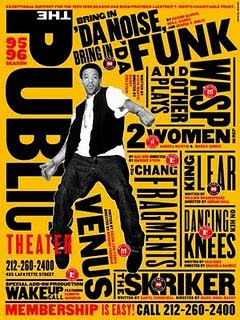



In the 1930's when American commercial art and advertising were dominated by hard-sell copy and realistic illustration, Paul Rand introduced the formal vocabulary of the 1920's European avant-garde art movements to business communications and publishing. He was one of only a few American designers to lay claim to the modernist traditions of Cubism, de Stijl, Constructivism and the Bauhaus, and was influential in bringing what was called the New Typography -- the rejection of archaic and sentimental type and layout treatments -- to the United States.
Rand’s distinctive style was a result of his talent and extensive design education. It inspired his success at the merger of modern
typography with nineteenth-century engravings. Rand strove to unite letters, finding unique graphic ways of bringing together letters of a word.
His work is characterised by wit, simplicity and a bauhaus approach to problem solving.
Typography was definitely one of his strongest command areas, and with his impeccable understanding of both visual content (image/illustration) and technical content (typography/typeface), he produced designs which lasted decades. Balance, uniformity and equilibrium of spacing were the three common elements of Paul Rand’s typography related work. And he excelled at that, as seen in his logos for IBM, EF and Yale University Press.

http://www.nenne.com/typography/pr1.html
http://www.answers.com/topic/paul-rand
http://www.nytimes.com
http://www.scribd.com
http://www.google.com.au



































